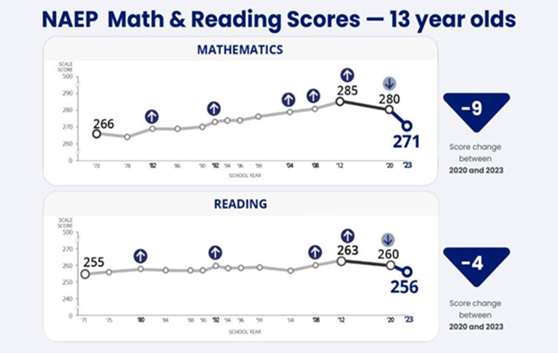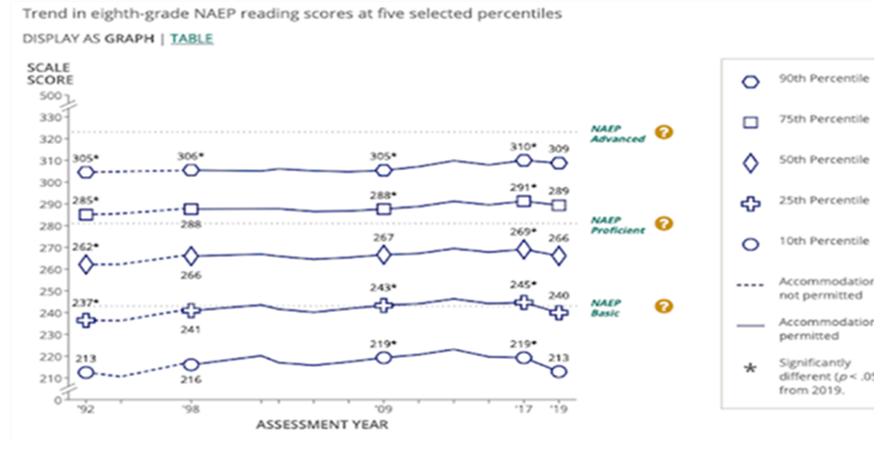Dr. KRK's BLOG: NAEP progress & Matthew Effect: Making the goal?
Academic achievement scores are missing the goal. National Assessment of Educational Progress (NAEP )scores continue to decline as shown in Figures 1 and 2. Many say the decline results from the school closing of COVID. Review of the data, though, says otherwise EDWeek (Schwartz, July 162025) posted an article the types of materials teacher use noting they often rely on practices they have experience using even with lack of educational again and inspite of research silos filled and overflowing with studies on what programs have the potential to increase educational progress if implemented.
Harvard University faculty director of the Center for Education Policy Research, Thomas J. Kane wrote “if the central purpose of education research is to identify solutions and provide options for policymakers and practitioners, one would have to characterize the past five decades as a near-complete failure “ (Kane, 2016) (p.80) Rather than finding ways to generate more research of the same type, we need to ensure that our evidence making is better integrated with the way decisions are reached. And that requires a different model.
Only thirty-one percent of fourth-grade students performed at or above the NAEP Proficient level on the reading assessment in 2024—2 percentage points lower compared to 2022 and not significantly different from 1992, the first reading assessment year. Thirty-three percent of eighth-grade students performed in the range of the scale below the NAEP Basic level in 2024, a larger percentage of students compared to both 2022 and 1992, the first reading assessment year.
NAEP data summarized in Figure 2 highlights factors that should elicit further concern: (1) there is clear evidence of a Matthew Effect, policies implemented impact the increasing decline of educational progress among the lowest functioning students yet offer some benefit to the already higher achieving students; (2) data decline seems to follow the focus on evidence-based research and practice following the 2015 passage of Every Student Succeeds Act (ESSA) model.
A wide research to practitioner gap exists. If the research gathered is not being implemented do we need a different approach to research, teacher training, parent training? Does legislation requiring evidence-based programs and practices implmented in the classroom miss the mark? Do those writing the regulations actually understand how to apply the research data gathered?
FIGURE 1

FIGURE 2 NAEP READING DECLINE FOR LOWEST ACHIEVING
